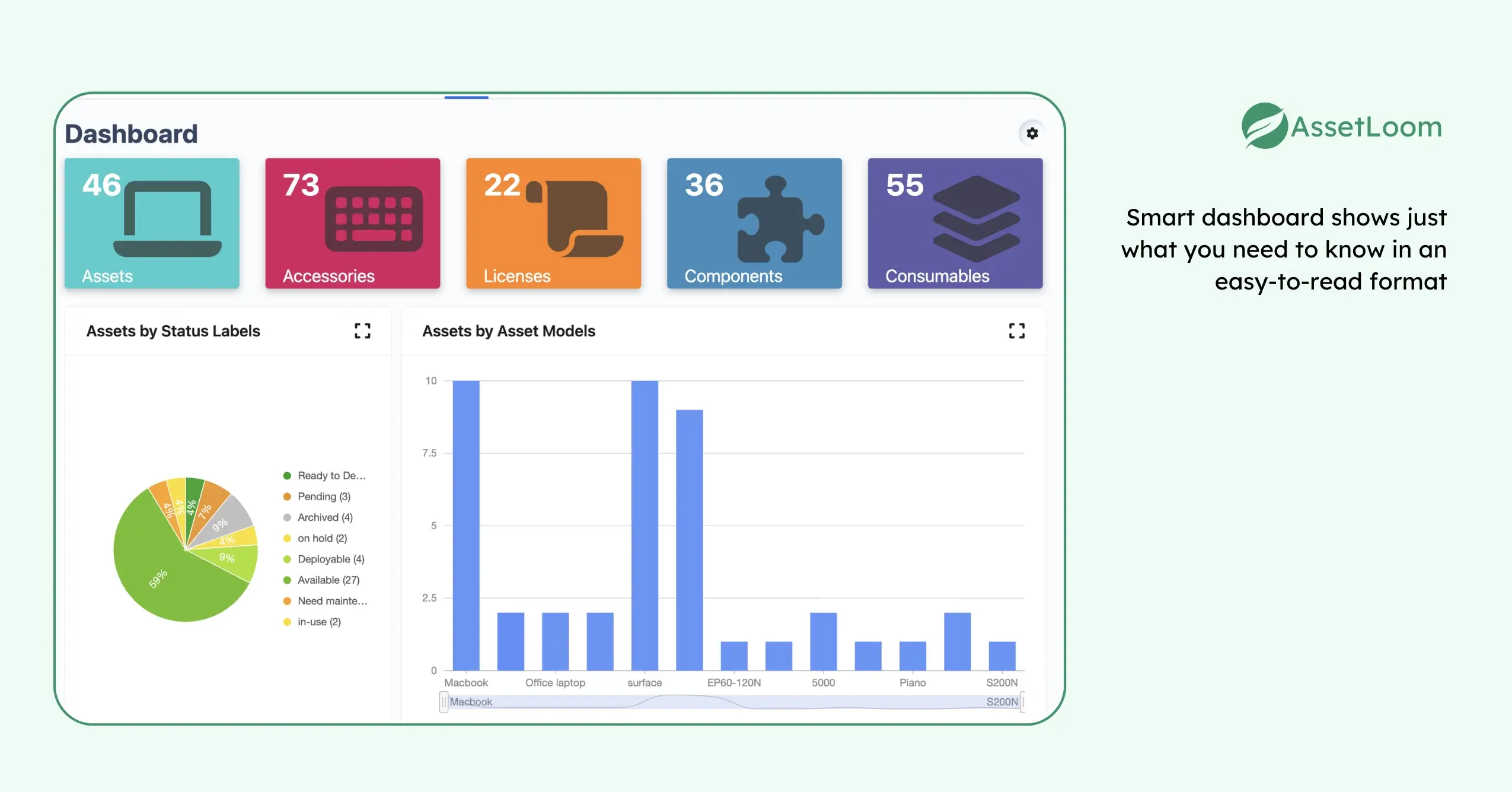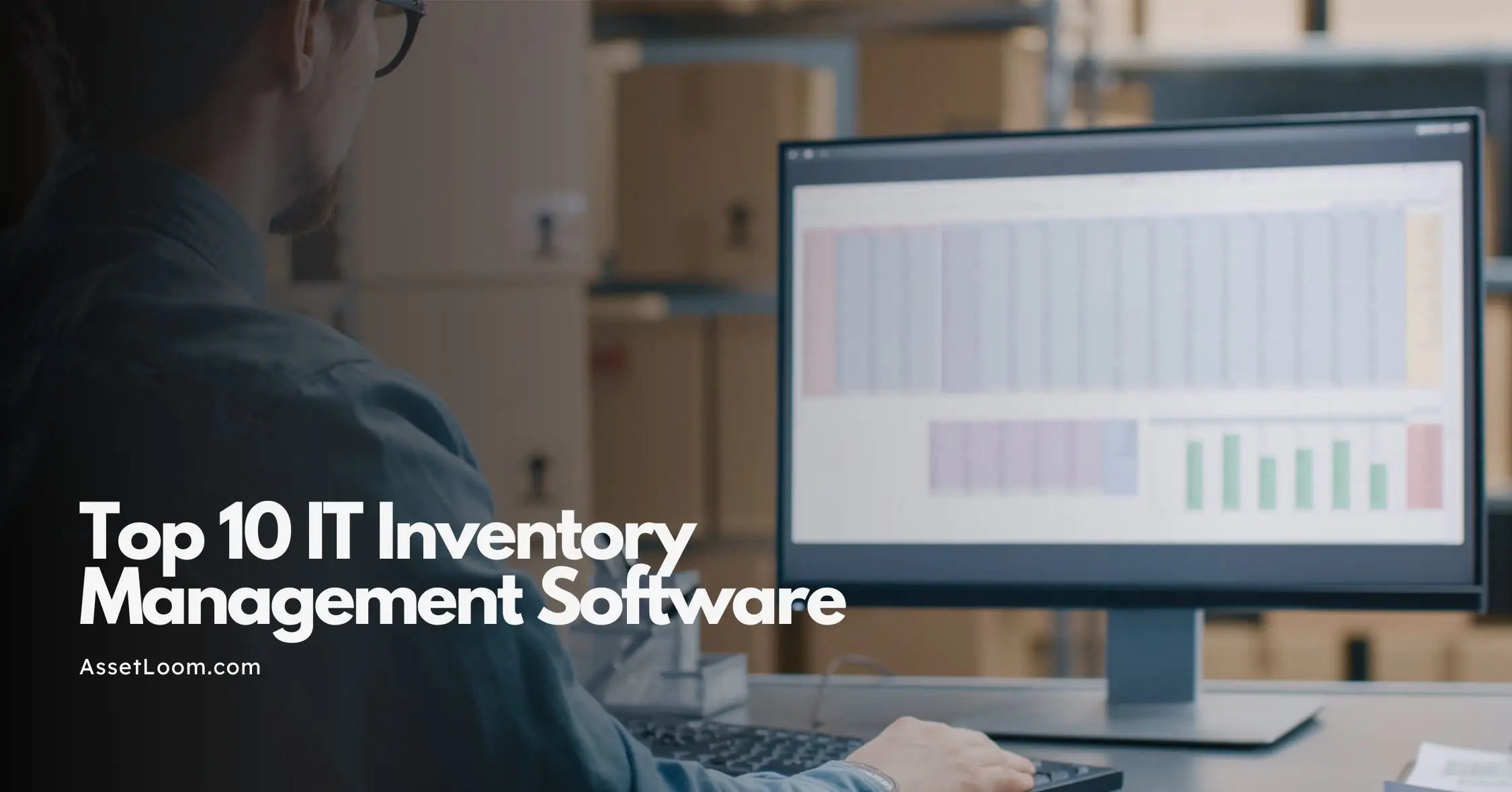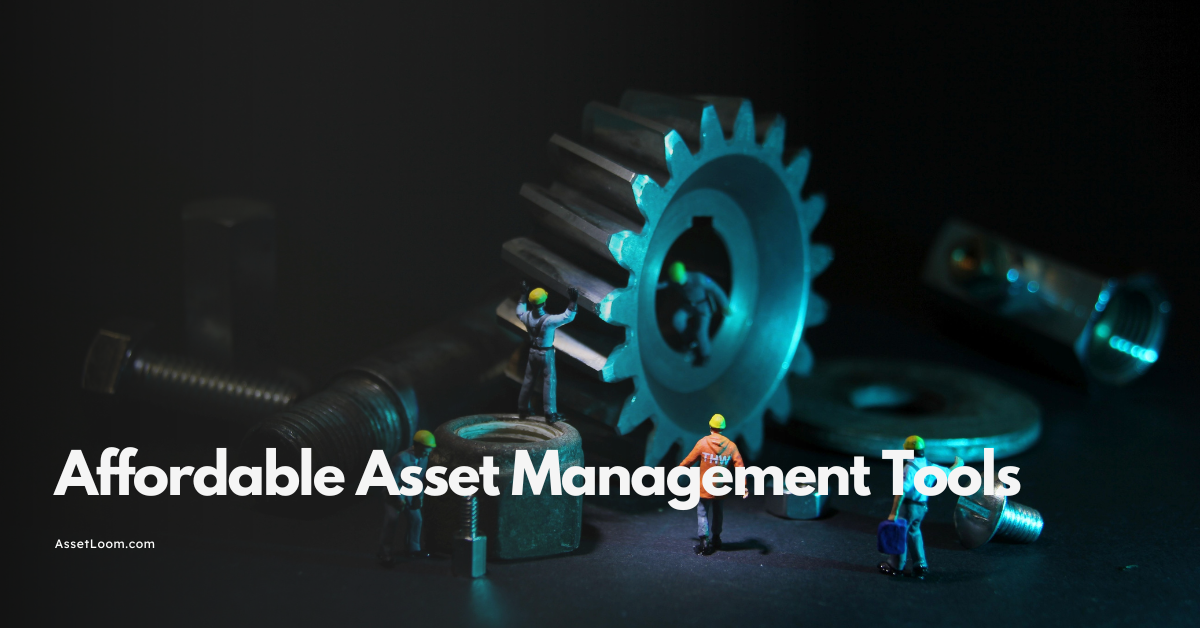ServiceNow IT Asset management vs. AssetLoom: Which Fits Your Business?
ServiceNow IT Asset Management is a robust solution for tracking and optimizing IT assets. Compare it with AssetLoom to find the best fit for your business.
ServiceNow IT Asset Management and AssetLoom represent two distinct generations of IT asset management solutions. ServiceNow has helped organizations manage their IT assets since 2003, and AssetLoom brought a fresh approach to the market in 2025.
These platforms want to streamline the complete lifecycle of physical and digital assets - from procurement and deployment to maintenance and disposal. They differ by a lot in their approach. ServiceNow builds on ITIL best practices for enterprise-level management. AssetLoom provides a more available solution. Choosing between these platforms isn't simple, especially with mission-critical assets worth billions of dollars at stake. Our comparison will help you assess which solution is arranged better with your organization's needs, budget, and growth plans.
ServiceNow IT Asset Management vs AssetLoom: Core Capabilities
Strong core capabilities form the base of good IT asset management. ServiceNow IT Asset Management and AssetLoom each have their own way of meeting these basic needs, though they go about it differently.
Asset Tracking and Inventory Management
ServiceNow shines at enterprise-level asset tracking with a detailed platform that brings hardware, software, and cloud assets together in one system. The platform uses various tracking technologies including GPS, barcodes, and RFID to keep tabs on computing equipment and servers. This smart setup helps organizations maintain accurate inventories across multiple locations and cuts down on manual data entry mistakes.
AssetLoom takes a simpler path with live monitoring that makes asset data easy to find. The platform's smart dashboard shows just what you need to know in an easy-to-read format. You can process equipment requests with fewer clicks compared to other systems, which makes AssetLoom a great fit for teams that want to work faster.

Both platforms want to boost inventory accuracy and accountability. ServiceNow does this with lots of detail while AssetLoom keeps things simple and streamlined.
Lifecycle Management Approaches
ServiceNow uses a structured six-stage asset lifecycle (Request, Fulfill, Deploy, Monitor, Service, Retire) with automation at every step. Asset records update automatically through each phase, which means no manual updates. The platform's forecasting tools look at inventory and usage patterns to help make smart buying decisions.
AssetLoom brings more flexibility to lifecycle management. The system automates deployment, maintenance, and retirement while working smoothly with your existing setup. What stands out is how it predicts when assets need maintenance or replacement, giving teams time to plan their budgets.
The biggest difference is in setup complexity. ServiceNow gives you more features and settings to play with, while AssetLoom focuses on making things easy to use with straightforward automation.
Compliance and Risk Management Features
ServiceNow's compliance management is particularly strong. It watches software usage and licensing compliance constantly. You get automatic alerts about possible compliance issues along with specific fixes, so problems don't get bigger. The platform creates reports ready for audits, making formal reviews much easier.
For managing risks, ServiceNow gives you detailed tools to spot, review, and reduce technology risks like tech debt, shadow IT, vulnerabilities, and license issues. Risk scores show up in color-coded heatmaps based on how likely things are to fail and what that means for operations.
AssetLoom keeps things simpler with built-in compliance checklists and automatic documentation. This approach might not be as complex as ServiceNow's, but it works great for organizations that don't have dedicated compliance teams.
Both platforms handle the basics of governance well. ServiceNow just offers more advanced tools for organizations dealing with complex regulations.
Pricing Models and ROI
IT teams need to carefully look at pricing and potential returns before they invest in asset management solutions. A good look at how ServiceNow and AssetLoom handle their pricing helps companies make smart financial choices that work for their needs.
ServiceNow IT Asset Management Pricing Structure
ServiceNow doesn't use a standard pricing model. They create custom quotes based on what each company needs. Their packages scale up as companies grow, and prices flex to match specific requirements. You won't find fixed prices listed anywhere since costs change based on industry, location, and how complex the setup is.
The pricing works on yearly subscriptions. What you pay depends on how many people use it and what they do with it. There are three levels - Standard, Professional, and Enterprise - each with its own set of features. Some reports show ServiceNow licenses cost between $70 and $100 per user for one application.
Total Cost of Ownership Analysis
The real cost goes beyond the price tag. Total cost of ownership (TCO) includes everything you spend throughout an asset's life. ServiceNow's Asset TCO feature adds up all these costs - buying, running, maintaining, fixing, and disposing.
This complete view helps companies make smart choices about their investments by looking at all the costs.
Expected Return on Investment
Companies using ServiceNow can see big returns. Some have reported ROI as high as 325% when they switch from spreadsheets. Companies that already have systems in place can still see returns over 250% by adding new asset management features.
The math behind ROI is pretty simple - take what you earned, subtract what you spent, divide by what you spent, and turn it into a percentage. ServiceNow's software asset management saves money on IT and improves support. The main costs are what you pay your ITAM team and the tools they use.
Both systems help companies save money and reduce risks, but they do it differently. Smaller companies might see faster returns with AssetLoom's lower starting costs. Bigger enterprises can probably justify spending more on ServiceNow because they'll save more money over time.
Implementation and Integration
IT asset management solutions on these two platforms just need careful planning because they differ in their approach. Let's look at how they handle implementation and integrate with other systems.
Setup Complexity and Timeline
ServiceNow ITAM provides a complete enterprise-level setup that needs dedicated project teams and structured planning. The implementation moves through multiple stages that include configuration, customization, data migration, and system integration. This thorough process usually takes several months, though organizations can see value sooner through strategic planning.
AssetLoom takes a different path with its quick deployment and simple setup process. Teams can start tracking assets within days thanks to its cloud-based architecture. ServiceNow follows ITIL frameworks that need special expertise. AssetLoom's straightforward setup makes it available to teams that don't have dedicated IT asset specialists.
Available Integrations with Existing Systems
ServiceNow's platform architecture enables extensive integration options. The platform connects with certified integrations to many third-party apps. These include Microsoft Azure Active Directory for SSO usage tracking, BigFix to boost asset monitoring, and Jamf Pro for automatic data imports. Users can also connect with procurement systems like Coupa to automate purchasing.
AssetLoom comes with fewer pre-built connectors than ServiceNow but maintains key integrations with common tools. The platform works with Jamf Now for device management and Jira to coordinate asset management with IT operations. Its simple integration approach balances features with ease of use.
API Capabilities and Customization Options
ServiceNow's API capabilities work through multiple methods like REST and SOAP web services. JavaScript APIs help implement complex logic and ETL features move data across various protocols efficiently. The platform's MID Server creates secure connections to systems behind network firewalls.
AssetLoom focuses on configuration settings rather than complex scripting that ServiceNow requires.
Organizations should weigh setup complexity against customization needs to choose between these platforms. ServiceNow gives more flexibility but needs complex implementation. AssetLoom deploys faster with standard options.
User Experience and Interface
A user-friendly interface makes any IT asset management solution work better. ServiceNow and AssetLoom each provide unique user experiences that show their different approaches to asset management.
Dashboard and Reporting Tools
ServiceNow ITAM's Performance Analytics dashboards deliver powerful reporting features. These dashboards show how different indicators change over time, like pie charts but with time-based dimensions. Administrators can see quantitative measurements of usage, demand, and performance to guide their improvement plans. Users can customize their views based on renderer values and quickly tell the difference between Performance Analytics and standard report dashboards.
AssetLoom takes a different path with its "clean, colorful dashboard" that turns complex data into easy-to-understand visuals. The dashboard design "cuts through the clutter, presenting only the most relevant information in a clear, digestible format". Procurement teams can compare vendor quotes side-by-side and make decisions faster without getting lost in too much data.
Mobile Accessibility
ServiceNow's Mobile Platform comes with features that line up with Web Content Accessibility Guidelines. Users can adjust mobile analytics views based on their accessibility needs and set specific font sizes for mobile devices. Their Center of Excellence for Accessibility ensures mobile interfaces stay available to users with disabilities.
AssetLoom offers cloud-based access that lets users track assets from anywhere using desktops, tablets, or mobile devices. Teams working across multiple locations find this helpful when they just need to check asset details while moving around.
Learning Curve and Training Requirements
ServiceNow users must invest time in training. The platform offers many specialized courses like "Hardware Asset Management Fundamentals" and "Software Asset Management Professional Fundamentals". Their detailed training path combines instructor-led and on-demand courses to build expertise gradually.
AssetLoom makes things simpler with an interface so accessible that "a quick demo is enough. No weeks-long training here". Its design works well for users of all types, "from IT professionals managing complex inventories to small business owners". This approach saves time and eliminates the hassle of searching through disorganized records.
Business Size Compatibility
The choice between IT asset management solutions usually depends on your organization's size and complexity. Your current needs and future growth path largely determine the right fit.
ServiceNow for Enterprise Organizations
ServiceNow IT Asset Management targets large enterprises with complex IT environments. The platform excels at managing thousands of assets across multiple locations with detailed visibility. The Now Platform® delivers enterprise-level automation that streamlines processes, supports data-driven decisions, and controls expenditures from a unified system of action.
Large enterprises managing complex asset relationships benefit from ServiceNow's overarching dashboard. The system builds on detailed asset relationships and multi-component data structures. Large businesses find its expandable solutions perfect for their growing needs without major reconfiguration.
ServiceNow proves most valuable when organizations need:
- Extensive customization options that match complex business processes
- Detailed compliance support for regulatory requirements
- Integration with broader IT service management frameworks
AssetLoom for Small to Medium Businesses
AssetLoom brands itself as "a comprehensive it asset management software designed to streamline the tracking and management of valuable assets" while emphasizing accessibility. The platform serves organizations looking for straightforward solutions with a simple approach that doesn't require specialized expertise.
Unlike ServiceNow's enterprise focus, AssetLoom describes itself as "best fit for businesses of all sizes needing a straightforward, cloud-based solution with a focus on ease of use or affordability". Small to medium businesses without dedicated asset management teams find this accessibility attractive.
Scalability Considerations
ServiceNow's tiered scaling approach offers structured growth paths designed for enterprises. Notwithstanding that, this tiered system "can provide easier cost management and a more straightforward selection process for smaller companies" but might feel "limiting" for "organizations experiencing rapid growth".
AssetLoom approaches scalability differently by emphasizing flexibility as businesses expand. This matches the trend where "IT asset management software must be able to grow alongside an organization, adapting to increasing demands without requiring frequent system changes".
Organizations should think over their current size and future growth patterns carefully. ServiceNow shines as complexity increases, supporting "the complex needs of even the largest enterprises". AssetLoom maintains its simple value proposition throughout the scaling process.
Comparison Table
| Feature | ServiceNow IT Asset Management | AssetLoom |
|---|---|---|
| Launch Year | 2003 | 2025 |
| Pricing Model | Custom pricing; $70-$100 per user for an application | Coming soon |
| Asset Tracking Approach | Enterprise-level tracking with GPS, barcodes, and RFID | Simple tracking with up-to-the-minute monitoring |
| Lifecycle Management | Six-stage well-laid-out lifecycle with detailed automation | Agile approach with simplified automation |
| Compliance Features | Resilient compliance monitoring, automated alerts, audit-ready reports | Built-in compliance checklists and automated documentation |
| Implementation Timeline | Several months | Days |
| Integration Capabilities | Extensive third-party integrations, detailed API support | Essential integrations, simplified API approach |
| Dashboard Complexity | Sophisticated Performance Analytics dashboards with temporal dimensions | Clean, simplified dashboards with focused relevant information |
| Training Requirements | Substantial training investment with multiple specialized courses | Minimal training needed; quick demo sufficient |
| Target Business Size | Large enterprises with complex IT environments | Small, medium and large Large enterprises businesses |
Conclusion
Businesses must consider several factors when picking between ServiceNow IT Asset Management and AssetLoom. These factors include their needs, resources, and plans for growth. ServiceNow shines as a detailed enterprise solution. Its complexity and high investment costs make it a better fit for large organizations with vast asset portfolios. AssetLoom presents a simplified alternative that draws attention through its ease of use and cost-effectiveness. Small to medium businesses find it an excellent choice.
Both platforms handle basic asset management tasks well, but they take different paths. ServiceNow gives you deep customization options and resilient compliance features that support complex enterprise needs. AssetLoom puts its focus on being easy to use and quick to set up. Your team can start managing assets in days instead of months.
ServiceNow ended up being perfect for enterprises that just need detailed asset management to blend with their IT service management systems. AssetLoom works best for organizations looking for the quickest way to track assets without too much overhead. Each solution excels in its market, which lets businesses pick the right tool based on their situation and goals.
FAQs
Q1. What are the key differences between ServiceNow IT Asset Management and AssetLoom? ServiceNow offers a comprehensive enterprise solution with extensive customization and integration capabilities, while AssetLoom provides a streamlined, user-friendly approach with faster implementation and a simpler pricing model.
Q2. Which solution is better suited for small to medium-sized businesses? AssetLoom is generally more suitable for small to medium-sized businesses due to its simplified approach, faster implementation, and lower cost. ServiceNow is typically more appropriate for large enterprises with complex IT environments.
Q3. How do the implementation timelines differ between ServiceNow and AssetLoom? ServiceNow implementation can take several months due to its comprehensive nature, while AssetLoom can be deployed within days, allowing for quicker asset management initiation.
Q4. What are the main considerations for scalability when choosing between these solutions? ServiceNow offers structured growth paths designed for enterprises, making it ideal for organizations anticipating significant expansion. AssetLoom focuses on flexibility without requiring major system overhauls, suitable for businesses seeking simplicity throughout their growth.

Related Blogs
Subscribe for Expert Tips and Updates
Receive the latest news from AssetLoom, right in your inbox.


